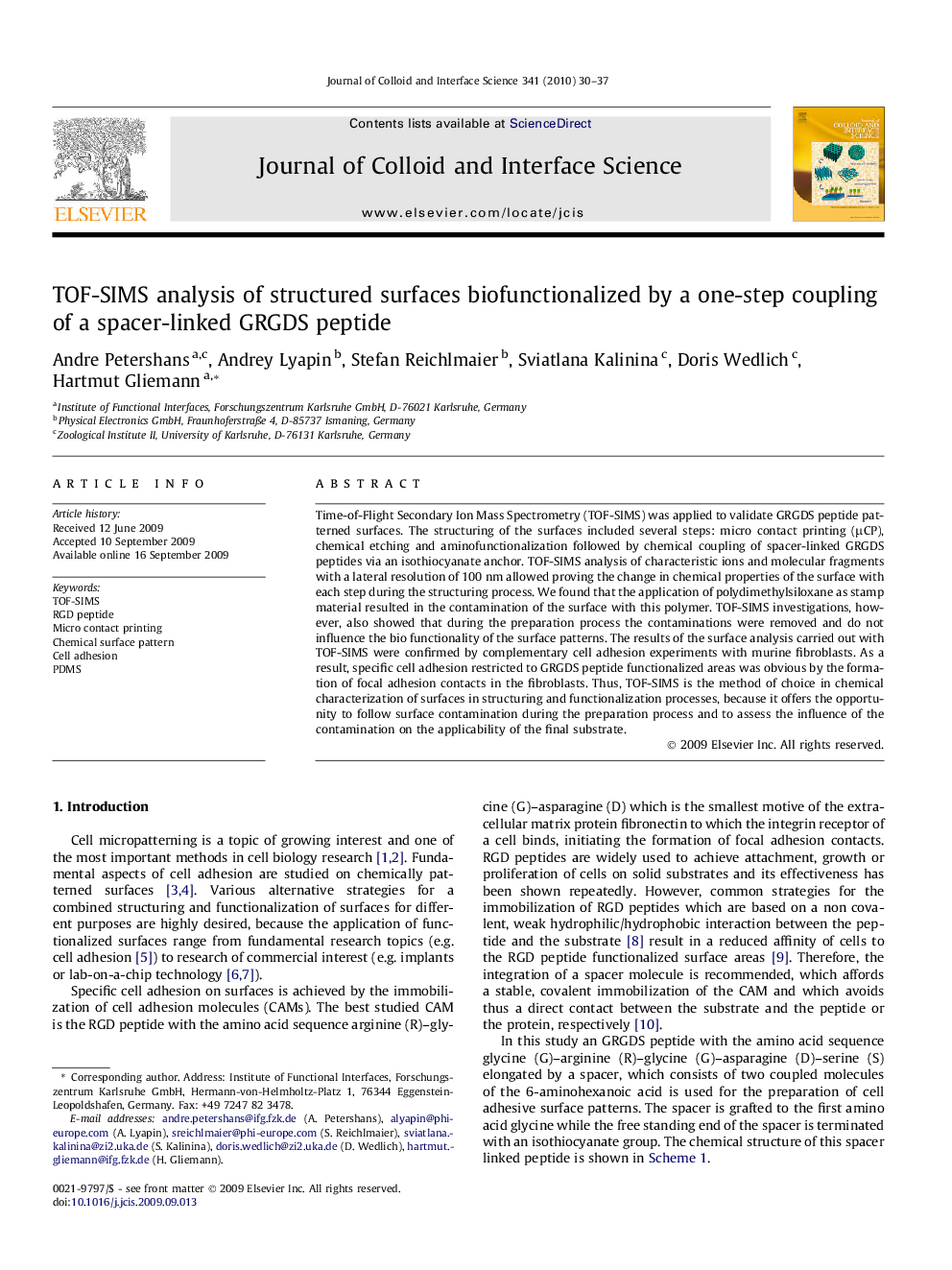| Article ID | Journal | Published Year | Pages | File Type |
|---|---|---|---|---|
| 609919 | Journal of Colloid and Interface Science | 2010 | 8 Pages |
Time-of-Flight Secondary Ion Mass Spectrometry (TOF-SIMS) was applied to validate GRGDS peptide patterned surfaces. The structuring of the surfaces included several steps: micro contact printing (μCP), chemical etching and aminofunctionalization followed by chemical coupling of spacer-linked GRGDS peptides via an isothiocyanate anchor. TOF-SIMS analysis of characteristic ions and molecular fragments with a lateral resolution of 100 nm allowed proving the change in chemical properties of the surface with each step during the structuring process. We found that the application of polydimethylsiloxane as stamp material resulted in the contamination of the surface with this polymer. TOF-SIMS investigations, however, also showed that during the preparation process the contaminations were removed and do not influence the bio functionality of the surface patterns. The results of the surface analysis carried out with TOF-SIMS were confirmed by complementary cell adhesion experiments with murine fibroblasts. As a result, specific cell adhesion restricted to GRGDS peptide functionalized areas was obvious by the formation of focal adhesion contacts in the fibroblasts. Thus, TOF-SIMS is the method of choice in chemical characterization of surfaces in structuring and functionalization processes, because it offers the opportunity to follow surface contamination during the preparation process and to assess the influence of the contamination on the applicability of the final substrate.
Graphical abstractTOF-SIMS investigation of microstructured substrates, biofunctionalized by the covalent one-step coupling of a spacer-linked GRGDS peptide for specific cell adhesion.Figure optionsDownload full-size imageDownload high-quality image (117 K)Download as PowerPoint slide
